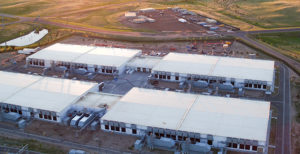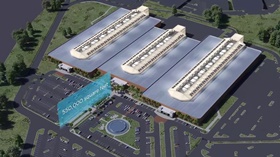Data Centers as Microgrids
The U.S. Department of Energy reported that in “2014 the total power consumption of data centers was estimated at 70 billion kWh, which equated to approximately 1.8% of the the total U.S. electrical energy consumption.” [1] It is not unreasonable to see data centers constructed with the capacity to support over 100 MegaWatts of power, and although data center energy efficiency has improved dramatically over the past few years [2], the need for power is still growing.
Data centers operate under a premise of “mission critical”, in that they must maintain certain levels of uptime and availability to provide service to both internal enterprise and external clients alike. Recent examples in the news such as the outages that affected British Airways and Amazon AWS show that data center downtime can mean millions of dollars of lost revenue.
To assist in maintaining reliable operation most data centers have an array of standby generators to provide power to the facility should there be an interruption of service in the electrical power utility grid. The Uptime Institute https://uptimeinstitute.com) provides the best practices and standards for design and operation of the critical infrastructure supporting data center operations. Their viewpoint of generators is that they are the primary source of power to the data center, and the utility is considered an “economic alternative” source of power. The basis of this is that the data center operator has control over the maintenance and operation of the generators versus the utility grid where they are a customer. Operating a bank of generators for a 24/7 facility is both extremely costly and not very “green” due to the carbon emissions from the exhaust. Generators and the associated fuel delivery system is a significant investment in equipment capital expense, and with the exception of periodic testing these units usually sit idle.
As data centers grow in the amount of power they use they stress the local utility’s capability to provide power to not only them but other customers in the region. Some public utility energy suppliers, however, are taking advantage of a data center’s back up infrastructure and utilizing a energy “hog” and turning it into an energy source.
Microsoft and the State of Wyoming
Microsoft announced plans to build a new 200 MegaWatt data center in Cheyenne, WY which was heralded as a big economic win for the region. Most of Wyoming’s power is generated through coal powered plants which did not fit well with Microsoft’s sustainability practices. The local utility company, Black Hills Energy, had concerns in building a new coal fired power plant to support the facility would not be feasible due to new environmental regulations. Black Hills and Microsoft entered a deal that the standby generators supporting the data center would assist the local electrical grid by putting power back onto it during peak use. [3] The generators are a cleaner source of fuel than a coal fired power plant, which is typical in Wyoming. This deal between a utility company and a data center was innovative, groundbreaking, and the first of many to come.

Microsoft, Cheyenne, WY – Image Courtesy of Microsoft
Arizona Public Service (APS) and Aligned Data Centers
Aligned Data Centers, a co-location data center company, selected Phoenix, AZ as their second site in the country and renovated a former Honeywell manufacturing facility into a data center. The greater Phoenix metropolitan area has seen an increase in the construction of data centers (primarily co-location) due to a robust power and fiber infrastructure, relatively low utility rates, and lack of serious natural disasters. Those along with recent tax incentives provided by the State to lure data center companies make Phoenix very attractive. By nature, data centers “represent large static loads on the grid, which because of the information they store, require higher levels of reliability and power quality than most other large users of electricity.” [4]. The data center is designed for just over 60 MegaWatts of power, and contains a number of standby power generators to operate the facility in the event of utility interruption. A deal struck between Aligned Energy and APS (Arizona Public Service), the local electrical utility, allows for APS to utilize the generators should a component of the grid fail (that isn’t being utilized for the data center). A facility that would normally be considered only a major energy user is now a major energy supplier. A deal was struck between Aligned and APS to share in the upfront cost of the generators (normally absorbed entirely by the data center), with APS having the rights to utilize the system to provide power to prevent outages. [5] This is extremely important during the summer months in Phoenix, with air conditioning units required to battle the plus 115 degree heat. To combat harmful emissions from the combustion process, the generators are fitted out with a urea filtration system which brings pollutant levels below what is required by the Arizona Department of Environmental Quality.

Aligned Data Center, Phoenix, AZ – Image Courtesy of Aligned Data Centers
Changing the Game
For years data centers consumed energy at astronomical rates, and uptime, reliability, and maintaining operations trumped energy efficiency. Over the past ten years the data center design and construction industry along with the data center operators have seen a paradigm shift in the approaches to energy efficiency. Through research and enterprises that are cutting edge data centers are still users of large quantities of power, but in a far more efficient manner. Companies such as Microsoft and Aligned Data Centers have teamed with local utilities in “out of the box” thinking to compliment each other, with the result of buildings once considered inefficient energy hogs now providing clean energy to the communities in which they reside.
[1] https://energy.gov/sites/prod/files/2016/07/f33/dc_improvement.pdf
[2] http://fortune.com/2016/06/27/data-center-energy-report/


